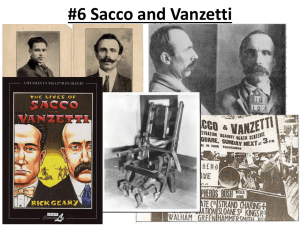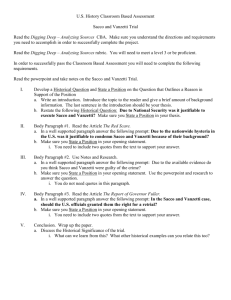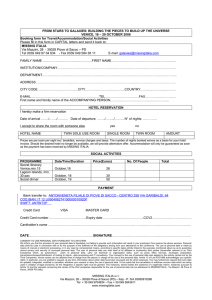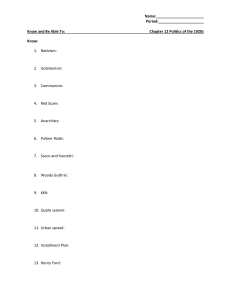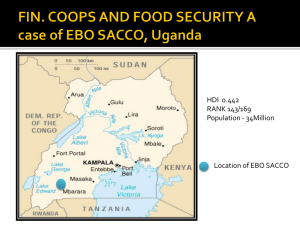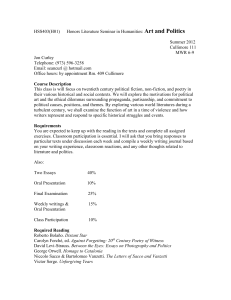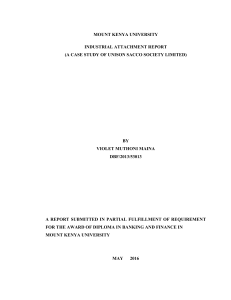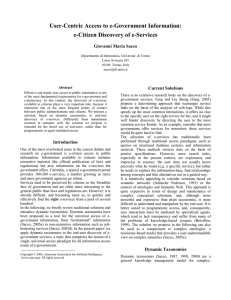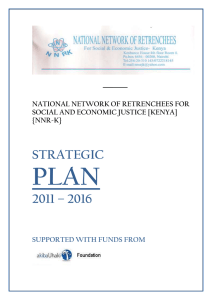09 - forms of business units - kcpe-kcse
advertisement
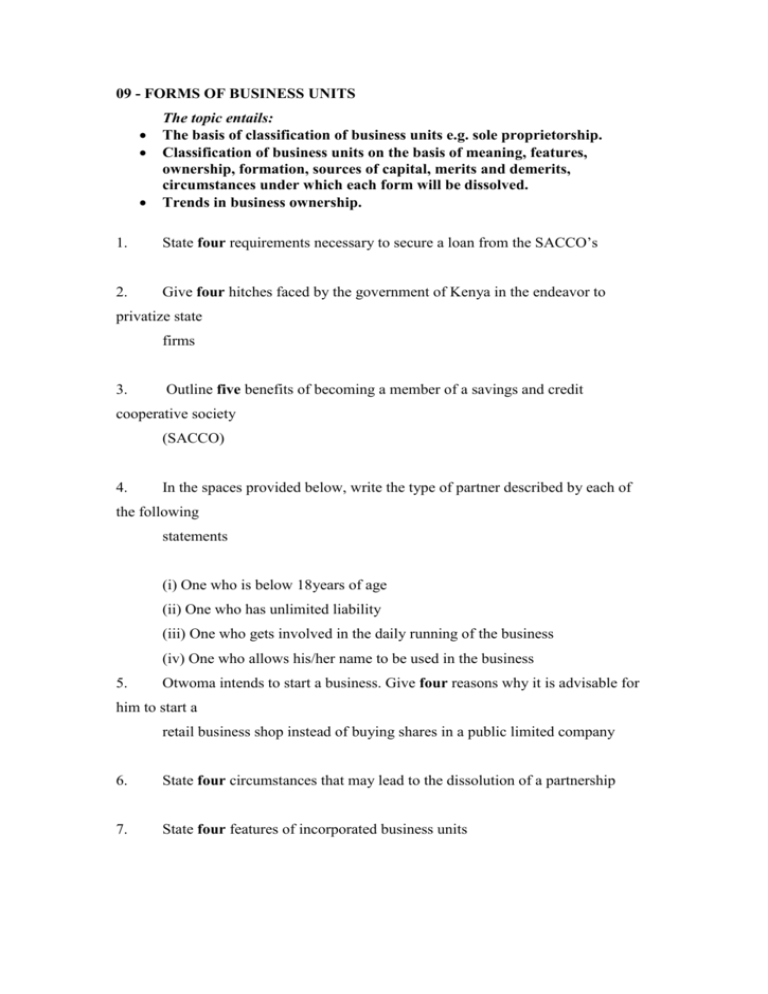
09 - FORMS OF BUSINESS UNITS The topic entails: The basis of classification of business units e.g. sole proprietorship. Classification of business units on the basis of meaning, features, ownership, formation, sources of capital, merits and demerits, circumstances under which each form will be dissolved. Trends in business ownership. 1. State four requirements necessary to secure a loan from the SACCO’s 2. Give four hitches faced by the government of Kenya in the endeavor to privatize state firms 3. Outline five benefits of becoming a member of a savings and credit cooperative society (SACCO) 4. In the spaces provided below, write the type of partner described by each of the following statements (i) One who is below 18years of age (ii) One who has unlimited liability (iii) One who gets involved in the daily running of the business (iv) One who allows his/her name to be used in the business 5. Otwoma intends to start a business. Give four reasons why it is advisable for him to start a retail business shop instead of buying shares in a public limited company 6. State four circumstances that may lead to the dissolution of a partnership 7. State four features of incorporated business units 8. List four documents that are required before a public limited company is allowed to operate in the country 9. List four documents that are required before a public limited company is allowed to operate in the country 10. Highlight four ways in which the running of public corporations is ineffective in this country 11. You have been charged with a duty of preparing an article of Association for your company; state four items that you will include in your article of Association 12. Honey intends to join a consumer Co-operate society; Highlight four benefits she would get by being a member of the society 13. State four features of multinational corporation 14. State four type of partnership businesses 09. -FORMS OF BUSINESS UNITS 1 Explain five advantages that Melinda could derive by investing in shares of a public limited 2 The following information was extracted from books of Chunga Traders for the period ending 31/12/2000:- Fixed assets – 350,000 Drawings – 50,000 Creditors – 50,000 Cash – 60,000 Discount received 4,000 Rent – 12,000 Bank overdraft – 10,000 Debtors – 20,000 Stock (31/12/2000)-30,000 Commission received – 6,000 Gross profit – 80,000 Electricity – 3,000 Stock (11/1/2000) – 50,000 Salaries – 20,000 Calculate:- (i) Working capital (ii) Capital employed 3 Distinguish between a public corporation and a public ltd company 4 Describe the procedure that a shareholder would follow in selling share through the stock exchange. 5 Challenges faced by the savings and credit cooperative societies 6. The Kenya Government has been privatizing its parastatals to would be investors. Explain any five benefits of the privatization process to the government 7. Explain five differences between private limited companies and public limited companies 8 Discuss five benefits that the Kenyan government may get by privatizing a state corporation 9 Describe five circumstances under which limited liability companies may be liquidated 10 Describe five distinctions between a public ltd company and public corporation 11 Distinguish between a public limited company and a private limited company 12 Katwaa is a member of Bidii savings and credit Co-operative. (SACCO). What benefits does she enjoy for being a member of the SACCO
